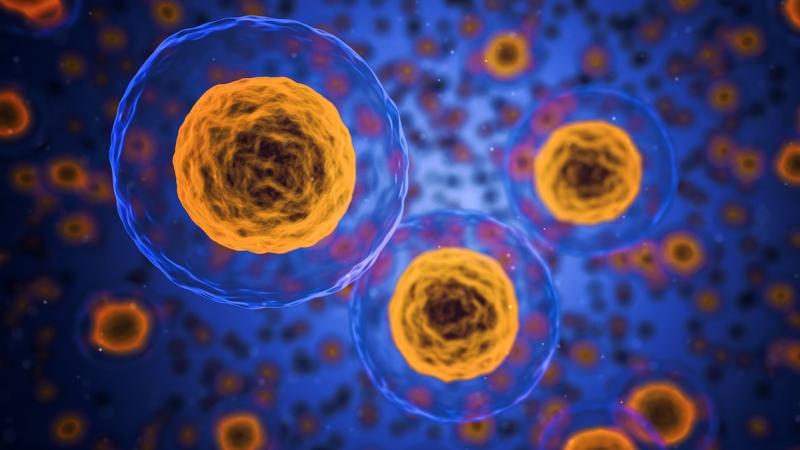
When we talk of force, most of us go back to our physics lessons and think of gravitational force or electromagnetic force. However, there is one vital force that holds life together—the force in our cells! If you are wondering what that is, let’s start with understanding the cell. Our body is made up of trillions of tiny little units called cells that come in many shapes and sizes and perform a myriad of functions. They come together to form structures like tissues, and interact with one another through their cell membranes—the outer boundary of the cell. Anything that needs to go in or out of the cell needs to knock on this membrane.
Substances that cannot pass through the cell membrane get into the cell through a process called endocytosis. The cell membrane invaginates or bends inside, and forms a vesicle or a bag like structure enclosing the entering substance. In another process called exocytosis, those that are inside the cell are transported outside by a similar mechanism.
“Imagine each time you enter a room, you take in the door and a portion of the wall with you. If the membrane is not carefully put back each time through exocytosis, the cell will shrink or enlarge”, says Joseph Jose Thottacherry, a graduate student with Dr. Satyajit Mayor at National Centre for Biological Sciences (NCBS), Bengaluru, who has been working on understanding different cellular mechanics since the last five years.
In a recent study, Mr Thottacherry, along with his collaborators from other Indian and Spanish institutes, has tried to understand how cells maintain their shapes in spite of expelling material from their membrane. Published in the journal Nature Communications, the study was partly supported by fellowships from the Council for Scientific and Industrial Research, Department of Science and Technology, and the Wellcome Trust-DBT India Alliance.
The study found that the answer to what makes the cell stay stable lies in a force called membrane tension. “We found that endo-exocytic processes are intimately connected to membrane tension”, reveals Thottacherry. The researchers have also identified a particular pathway, called the CLIC/GEEC pathway that can quickly sense and respond to changes in the membrane tension. Increased membrane tension decreases the endocytic pathways, making it difficult for substances to enter into the cell while reducing the membrane tension causes an increase in endocytosis.
The researchers used a ‘cell stretcher’—a silicon-based circular membrane—and attached cells to this. Akin to how a pattern on the balloon expands when you blow it, the cells on the membrane also stretch when the membrane stretches, thus altering the membrane tension of the cells.
“This silicon membrane is divided into two concentric circles and cells are added to the inner circle. To stretch it, we apply precisely calibrated vacuum to the outer concentric circle, sucking the membrane in and thus causing the membrane in the inner circle to stretch”, explains Mr Thottacherry.
The researchers then tested the process of endocytosis by using fluorescent material and measuring how much the cells would take in for a given amount of time. The fluorescent material helped them image the cells and understand how endocytosis changes with the tension of a cell. They then used a laser-based ‘optical tweezer’ to hold a bead and pull a thin membrane from the cell. “If the cell applies a higher force, it will pull the bead closer to it. If the force is less, the bead will move less”, says Thottacherry, detailing the experiment.
The researchers also identified a critical molecule called vinculin that helps to translate the physics in the membrane tension to a biochemical process in the cell to facilitate movement of particles. “Vinculin remains closed under low forces while on higher forces, it changes its conformation and opens up like a hairpin that is being pried open under force”, says Thottacherry. When vinculin opens up, it inhibits the CLIC/GEEC pathway, thus regulating the response to membrane tension and maintaining homeostasis—a steady state inside the cell.
What now appears as a solved problem had its challenges during the making. From building the necessary equipment, like the cell stretcher and the optical tweezer, to learning to use them, the researchers fought all odds. “I think the biggest challenge was setting this up here since many other components were needed for day to day working of this. We had to figure out ways and modify protocols to fit with the equipment we had here”, recalls Thottacherry. In the end, collaborating with Raman Research Institute, Bengaluru, paid off their efforts.
The findings of the study reveal how every moment, our cells are continually measuring and responding to changes in the force within them, to sustain what we call as life. As a next step, the researchers are trying to determine the importance of the relationship between membrane tension and the processes of endocytosis and exocytosis, which could play a role in cell migration during metastasis, or the entry of viruses into the cell.
“This study shows the importance of understanding forces in regulating these processes and thus would be important for fighting them effectively,” remarks Thottacherry.
Now you know when General Dodonna of Star Wars says, “May the Force be with you”, he means it literally.






